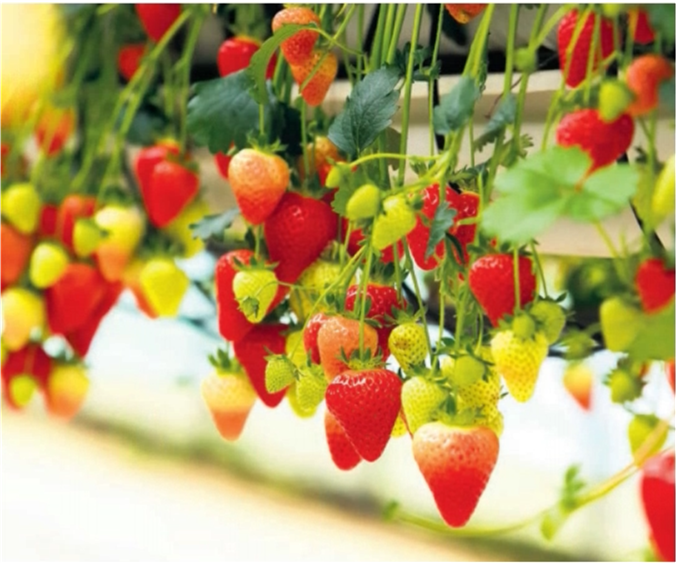Where Plants Meet Science, Market Opportunities and Investment
Lorcan Bourke Fresh Produce & Potato Manager for Bord Bia, points to a sector with opportunity based on current consumer and market trends.
The protected crop sector in Ireland consists of predominantly family-run businesses growing strawberries (and other berries), tomatoes, lettuce, cucumbers and peppers mainly for sale in the Irish retail market. Production takes place in growing media in either polythene tunnels or glass houses. Protected crops account for 20% of total horticulture output of which 15% is food crops and 5% is ornamental crops.
Recent years have seen a noticeable growth in the value of the output from this sector with expansion of strawberry production being a key contributing factor. Traditionally the protected crop food sector was dominated by tomatoes and lettuce, however since circa 2000, strawberries (and other soft fruit) have become Ireland’s largest protected crops, growing in line with strong market demand. Fresh potted herbs are another category which has seen growth in recent years.
The total retail market for fresh produce in Ireland is valued at €1.6 billion annually which includes fruit (€804m), vegetables (€570m) and potatoes (€236m). Foodservice is another important market channel which has been very seriously impacted by Covid-19 and will take some time to recover. The value of fresh produce foodservice sales was estimated at €400m (at wholesale prices pre-Covid-19)
Growing Conditions
High yields can be achieved through a combination of best applied scientific husbandry, environmental controls and many years of crop experience in this sector. Glass houses and tunnels allow growers to regulate optimum plant temperature controls and extend the natural season of availability, given that many of these crops cannot grow outdoors in the Irish climate. The weather, while not as big a determinant on crop success compared to field crops, has a huge bearing. Late cold springs can delay crops due to a lack of sunshine and excessive heat in the summer can cause crop flushes or even misshapen produce. Weather at any given time can create high or low consumer demand for salad or berry crops.
Irish growers have to compete in a highly competitive marketplace. There are ongoing challenges in terms of scale, input costs and labour availability. There has been consolidation in the sector in recent years with existing growers building scale and investing to modernise and improve efficiencies of operations.
Most protected crop enterprises are based in the Leinster region and the Cork city axis. North Dublin has historically accounted for the majority of protected vegetable crop structures. Strawberry production was traditionally associated with Wexford and the ‘sunny South East’, however modern strawberry production sites are found right across many counties in Leinster. All growing locations are located within close distance of the main retail central distribution depots in Dublin and Kildare.
The Power of Plants
2021 will be the UN designated International Year of Fruit and Vegetables.
Unlike many other foods at retail level, consumer and market trends have aligned, at fresh produce category level. Fresh produce involves plants, connection to nature, humans, the soil, seasons and locality. The global momentum for consumers to live lifestyles of health and environmental sustainability brings fresh produce front and centre in terms of dietary choices. The increasing consumption of plants in the diet has been identified as making a possible positive contribution to climate change mitigation. This mix of consumer trends and market dynamics will realise product opportunities for fresh produce into the future. In a time when consumers are more aware of and open to purchasing local, healthy and quality assured sustainably produced fresh produce, products such as seasonal salads and strawberries have a positive platform to build on. In addition the prepared fresh produce category is now valued at €124m at retail level which is an increase of over ten percent in the last five years. Consumers are receptive to prepared and convenient products which is creating market opportunities.





